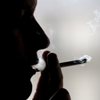
CDC Finds Higher Levels of Cancer-Causing Chemicals in U.S. Cigarettes
People who smoke certain U.S. cigarette brands are exposed to higher levels of cancer-causing tobacco-specific nitrosamines (TSNAs), the major carcinogens and cancer-causing agents in tobacco products, than people who smoke some foreign cigarette brands. This was one of the findings from the first-ever study to compare TSNA exposures among smokers from different countries. CDC researchers compared mouth-level TSNA exposures and urine biomarkers among smokers from the U.S., Canada, United Kingdom, and Australia. Results of this study are published in the June issue of Cancer Epidemiology Biomarkers and Prevention.
“We know that cigarettes from around the world vary in their ingredients and the way they are produced,” said Dr. Jim Pirkle, deputy director for science at CDC’s National Center for Environmental Health, Division of Laboratory Sciences. “All of these cigarettes contain harmful levels of carcinogens, but these findings show that amounts of tobacco-specific nitrosamines differ from country to country, and U.S. brands are the highest in the study.”
The types of tobacco in cigarettes vary by manufacturer and location of production. The U.S. cigarette brands studied contained “American blend” tobacco, a specific mixture of tobacco from the U.S. that contains higher TSNA levels. The Australian, Canadian, and U.K. cigarette brands were made from “bright” tobacco, which is lighter in color and flue cured. Changes in curing and blending practices could reduce U.S. smokers’ exposure to one type of cancer-causing compound, however, this would not necessarily result in a safer product.
Study collaborators enlisted 126 persons from Australia, Canada, the U.K., and the U.S. who smoke cigarettes daily to participate in the study. Cigarettes smoked by study participants represented popular brands in each country.
Scientists measured chemicals in cigarette butts collected by each smoker over a 24-hour period to determine how much of a certain TSNA entered the smokers’ mouths during that period. They also collected urine samples from study participants to find out how much breakdown product from this TSNA appeared in the urine. Comparing the results from these two types of sampling showed a correlation between the amount of one TSNA that enters the mouth and the amount of its breakdown product that appears in the urine. This is the first time this relationship has been documented.